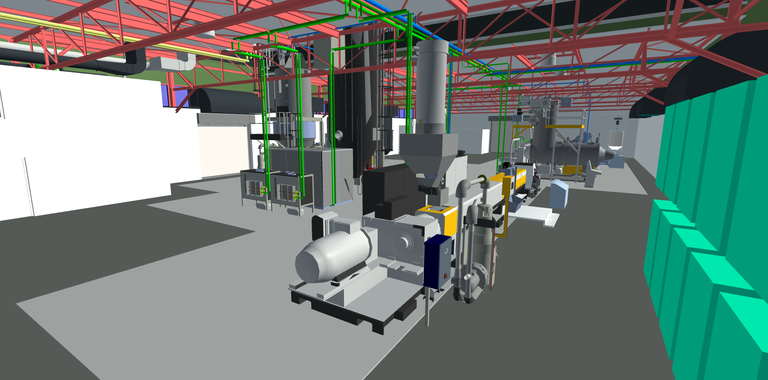
Bilfinger: digitally innovative
Years ago, Bilfinger foresaw the need for more and more digitization and innovation. Not only because of competitive advantages, but also because due to the tight labor market there is a need to automate more and more tasks and let people do their work as efficiently as possible. Since then, Bilfinger has delivered several innovations that clients can also benefit from.
With the scaffolding app, Bilfinger made it possible in 2015 to keep all information around a scaffolding project up-to-date in one digital file via smartphone or tablet, followed by the work preparation app. A few years later followed the Client Portal; a new service that allows customers to view all relevant data around Bilfinger's scaffolding projects online on their site. Anno 2022, Bilfinger Industrial Services is adding a Client Portal for Non Destructive Testing (NDT). And an insulation app, which, like the scaffolding app, allows you to collect all relevant information in the field of industrial insulation. Several innovations were also applied in the engineering phase; the most recent "asset" being the deployment of 3D issue tracking software.
Client Portal NDT
NDT is a collective name for various research methods with which you can examine material without damaging it. NDT offers the advantage that you can check the condition of an installation without having to take it out of operation. For example, you use ultrasound, magnetism and radiography. This allows you to get a good picture of the condition of the assets you are examining and determine their integrity. Both customers and the NDT department requested to be able to see via a Client Portal where Bilfinger is working with NDT, what they are doing there, and when they can continue their work. This is important, because it often involves a pipeline section that is temporarily out of service and requires other work. In a short time Bilfinger developed a Client Portal NDT. One difference with the Client Portal for scaffolding construction is that it contains more elements. For example, not only scaffolding construction, but also insulation work and of course NDT work are displayed on a map. A first pilot is currently being carried out at a Dutch natural gas company.
Insulation app
In early April, the very first version of the insulation app was rolled out at a large chemical company in Rotterdam. The app is based on the well-known scaffolding app but is entirely focused on insulation work. With the insulation app you have all the data of an insulation project available digitally. Including attachments such as documents and photos. In the app you can easily see, per pipe section, the progress of the insulation work. This comes in handy since you often have hundreds of meters of pipe. Moreover, insulation involves more "milestones" than scaffolding construction. With scaffolding, a scaffold is built, put up for rent, and then taken down again. With insulation, you have to deal with sheet metal being removed, the insulation wool being removed, inspection and work, putting insulation back in place, and reattaching sheet metal. Those are more "milestones" and they can now all be viewed per pipe section via the Insulation app. So you have faster and more accurate insight into project progress and administrative processing.
3D issue tracking software
How do you ensure that clients can walk through "their" new plant or facility even before construction begins? And how do you ensure that any design flaws are detected and resolved at the earliest possible stage? Bilfinger Tebodin has the solution to this, using 3D issue tracking software. Designing a plant involves a lot of communication. Each discipline does its job, but to bring it all together in one digital design, engineering firms use BIM: Building Information Modeling. This is where all the information comes together and all disciplines and the end customer can view the model at any time and adjust it where necessary. Output from various software packages follows from there. Bilfinger Tebodin puts them together. Then they make a coordination model every week. This gives you an overview of what all the disciplines involved have done, from structural to mechanical engineering and from electrical engineering and instrumentation to piping. Sometimes as many as fifty people are working on the design at the same time, with or without the client. In the coordination model, you can see at a glance whether agreements are being kept and whether everything matches up. To do this, Bilfinger Tebodin uses an issue tracker, which immediately indicates where individual models overlap or where, for example, no maintenance can be carried out. Action points then follow from this, which they discuss with the responsible disciplines in a clash meeting. Advantages for customers are that they see immediately what they are getting. After all, you can virtually walk through the building in 3D and even with VR goggles prior to construction and make changes. Any problems are spotted early and eliminated. Clients are impressed by the ease with which all these action points are managed and also very positive about the issue tracking software: it helps with mutual understanding and saves a lot of valuable time.
